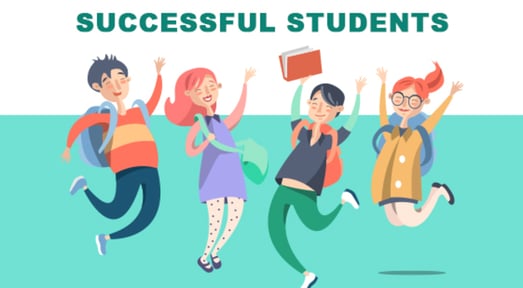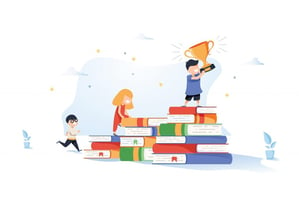Journey to America: A Case Study

Student Success stories series is a collection of studies on students that have been wildly successful in our program. Success stories have been written by our own teachers and feature their real students so new potential students can see if the NSEO program is right for them. Please note that the names and some personal data has been changed to protect the privacy of the students.
This student success story features Teacher Aundia's student, Sara.
The Story of Sara Park
Sara is a shy high school student getting ready to transfer to a school abroad. After connecting with the student and her family, we evaluated Sara’s needs and created a personalized learning plan. When I first met Sara, she was entering her first year of high school and preparing to study abroad in America. At first, she was very timid and lacked confidence in her English ability. Sara understood the English language well because she had English lessons provided by her school and attended an English Hagwon.
I understood that Sara would need not only to retain new information but also have scholarly discussions with peers about a topic, be able to formulate and express her opinion and respond to an academic question in written form.
However, she needed more experience conversing in English. Sara was anxious because this move to America meant all her core studies would now be in English.
In addition, she would now need to build meaningful relationships with her teachers and peers to have a successful high school experience.
Understanding Sara's goals allowed me to create lessons specific to her needs. As a former classroom teacher, I understood that Sara would need not only to retain new information but also have scholarly discussions with peers about a topic, be able to formulate and express her opinion and respond to an academic question in written form while citing information from various sources.
In preparation for Sara's transition, I created mini-academic lessons that would pierce multiple topics and develop growth opportunities.
Before creating the lessons, I looked over her school's standard course of study. I made lesson plans to go over the topics she would be studying once she left in the Fall.
Each of our mini-lessons examined new vocabulary and posed questions for her to respond to in written and spoken form. She was also given various opportunities to express her thoughts on new and old ideas.
Why Sara Chose You
My first interaction with Sara began with a 25-minute trial. Within this short time, Sara and I were able to make a connection that put her at ease. That bond was over our experience of moving to new countries.
I told Sara that I knew how overwhelming moving to a new country was because I had lived and taught in Korea for one year.
After finding this out, Sara asked me about my experience as a foreigner and my thoughts on Korean culture. She asked me where I lived, if I could make friends, and how my first day of school was.
I took her questions as a clue as to her concerns. In our following lessons, I would teach her about American culture, use Google Maps to see her new neighborhood, and teach her common expressions used by peers.  Ultimately, Sara and her family chose me as her teacher because I am a licensed teacher and could address her academic need. Still, I also took the time to understand their daughter as a maturing teen.
Ultimately, Sara and her family chose me as her teacher because I am a licensed teacher and could address her academic need. Still, I also took the time to understand their daughter as a maturing teen.
How Aundia Responded
I first wanted to get Sara excited about chatting in English while evaluating her prior knowledge, expression, and comprehension skills. To initiate conversation, I asked her to tell me what she knew about New York. From there, I could choose topics we could elaborate on.
Sara was prepared routinely, took additional notes, and often ended class with a question she had for our next session.
We began with mini lessons, the first topic being Blizzards and other severe weather. This subject was a great way to incorporate the winter months in New York and the essential questions “What conditions create server weather” and “How is snow made?”I noticed that Sara was prepared routinely, took additional notes, and often ended class with a question she had for our next session. These small gestures made me believe she found our sessions relevant and exciting.
I was delighted to create personalized lessons that suited Sara's needs. And look forward to hearing how she is adjusting to life in America when she leaves this fall.
When students receive individualized attention, they are more likely to engage with the material, ask questions, and receive feedback. They can also move at their own pace, which can be especially beneficial for students who are struggling or who have unique learning needs.
One-on-one tutoring can provide students with the support and guidance they need to reach their full potential.




